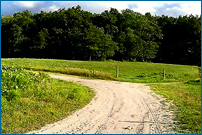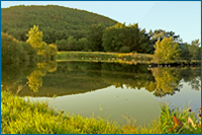The Valley Press – Thursday, May 19, 2011
The town of Simsbury has set a date for a Special Town Meeting on the purchase of a parcel of land at Tulmeadow Farm.
That meeting is scheduled for June 13 and will allow residents to weigh in on plans to preserve the 73-acre woodlot on the farm.

The parcel is the third and final purchase to protect the 260-acre farm, but plans for the purchase have changed slightly. Originally, the Simsbury Land Trust was to buy and protect the land.
Now – though it will not have to spend any additional cash to do so; the town must make the purchase and then enter an agreement with the Land Trust for the management of the area.
The reason for the alteration is due to a $1.4 million Forest Legacy Grant from the U.S. Forest Service toward the purchase. The Land Trust, which applied and received approval for the funds, recently learned the town must be the recipient, said director of Administrative Services Tom Cooke. Therefore, the town will officially own the property and the Land Trust will care for it.
Last year, the town agreed to contribute $280,000 toward the S2.8 million total. The Connecticut Department of Environmental Protection also gave $500,000 to the cause, and the Land Trust will contribute $630,000.

Tulmeadow Farm connects a 25-mile, approximately 6,000-acre national corridor that stretches from Simsbury all the way to the Massachusetts border.
The forested woodlot produces a marketable timber harvest every eight to 10 years and lies to the south and east of already preserved parcels of the farm. In addition, it is an integral link in a 4-mile walking trail used by hikers, dog walkers, joggers, horseback rider, cross-country skiers and nature viewers. There is a vernal pool on the western side of this parcel and another just beyond the southerly boundary.
“The Tulmeadow woodlot is just a treasure to preserve,” Land Trust President Chuck Howard has said.
To meet requirements set by the state for the DEP contribution to the purchase, once the town closes on the property it will enter into a conservation easement with the DEP and transfer one-half interest in the easement to the state.
The Land Trust will also get a separate right of way through the property.
At the Town Meeting, voters will be asked if the town should accept the easement and grant.
By Sloan Brewster
